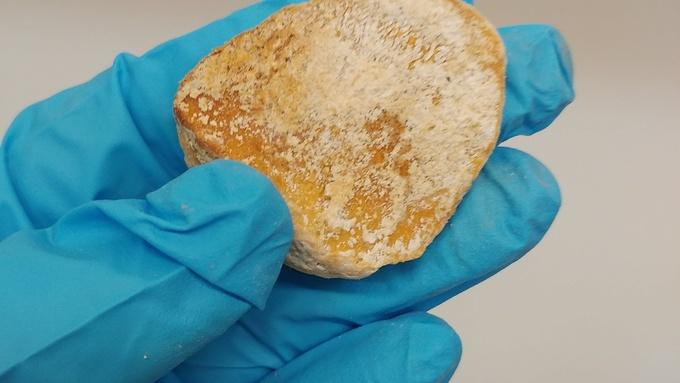
How a process that is a problem for our whale bones, can be of great value in forensic anthropology. A tale about adipocere, otherwise known as corpse wax.
Before a decedent whale can be stored in our collection, it has to be completely clean and stripped of soft tissues like meat and fat, which would start to rot. There are many different ways to prepare a skeletal specimen. Some museums use a colony of flesh eating dermestid beetles which will munch all the flesh off leaving clean, albeit smelly, bones. Some museums bury the specimen in the ground, or in a big pile of horse manure and let the natural bacteria (and heat, in the case of decomposing manure) do the work. And some museums, including Naturalis, clean bones using maceration: a warm water bath which slowly cooks the flesh off the bones. All of these methods are fine, and they all have the same result, which is clean bones. But, one side effect of maceration that the others don’t have, is adipocere, otherwise known as corpse wax.
Adipocere (from the French, adi = fat, cere = wax) looks like crumbly white or yellowish growths glommed on the surface of the bones. It is a byproduct of fat decomposition in an anaerobic environment. In the case of the Naturalis whale bones it is because the decomposition of fat is happening under water, in the tank. A few years ago, I removed the bones of a fin whale from the maceration tank, let them dry and almost immediately noticed that they were covered with a white film of adipocere. I removed it with a stiff brush. Some of the specimens I am working with now, especially more recent whales, have quite a bit on them. It is not hard to remove, though it does take time. Adipocere itself is not bad for the bones, though as it crumbles off, it makes a mess in the collection. Also, I have noticed that under adipocere deposits often there is a fat stain on the bone, which must be cleaned off.
The chevron before, after and during removing the adipocere.
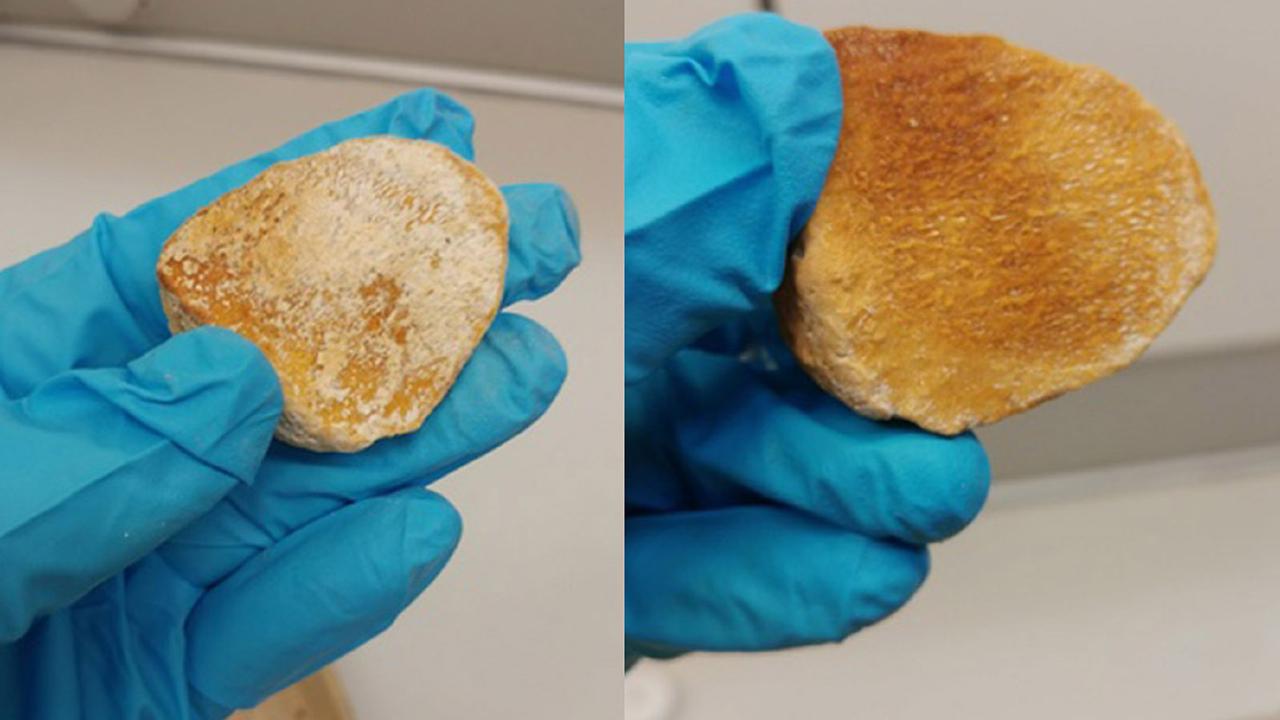
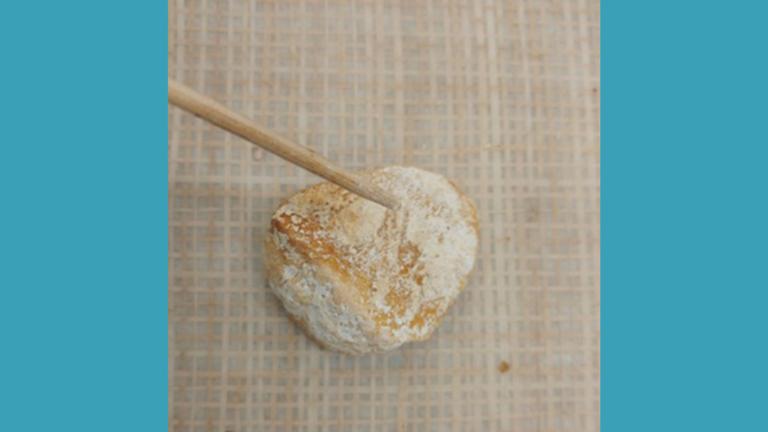
But, here is the interesting thing about adipocere: it is not just found on bones! Corpses in graveyards that have very wet soil, so an anaerobic environment is created. It this way, the corpse can become covered by adipocere, which then prevents the body from decomposing, creating what is a called a “soap mummy”. This has been a problem for graveyards which every 15-25 years have to recycle its burial plots. In Germany in 2008 workers at a particularly wet graveyard discovered many soap mummies when they went to remove bodies believed to be fully skeletonized.
Adipocere has been useful in the field of forensic anthropology. In 1996 a headless body covered in adipocere was discovered floating in the Brienze Lake in Switzerland. Researchers who worked on this male body eventually found that he had drowned in 1700! He had drowned and been buried in sediment, but two earthquakes prior to the bodie’s discovery probably freed it and sent it floating to the surface of the lake. The preservation inside the shell of adipocere was so complete they were able to see the stomach contents as well as other clues into the daily life of a person from 300 years ago.
A phalanx with adipocere and a carpal bone with adipocere
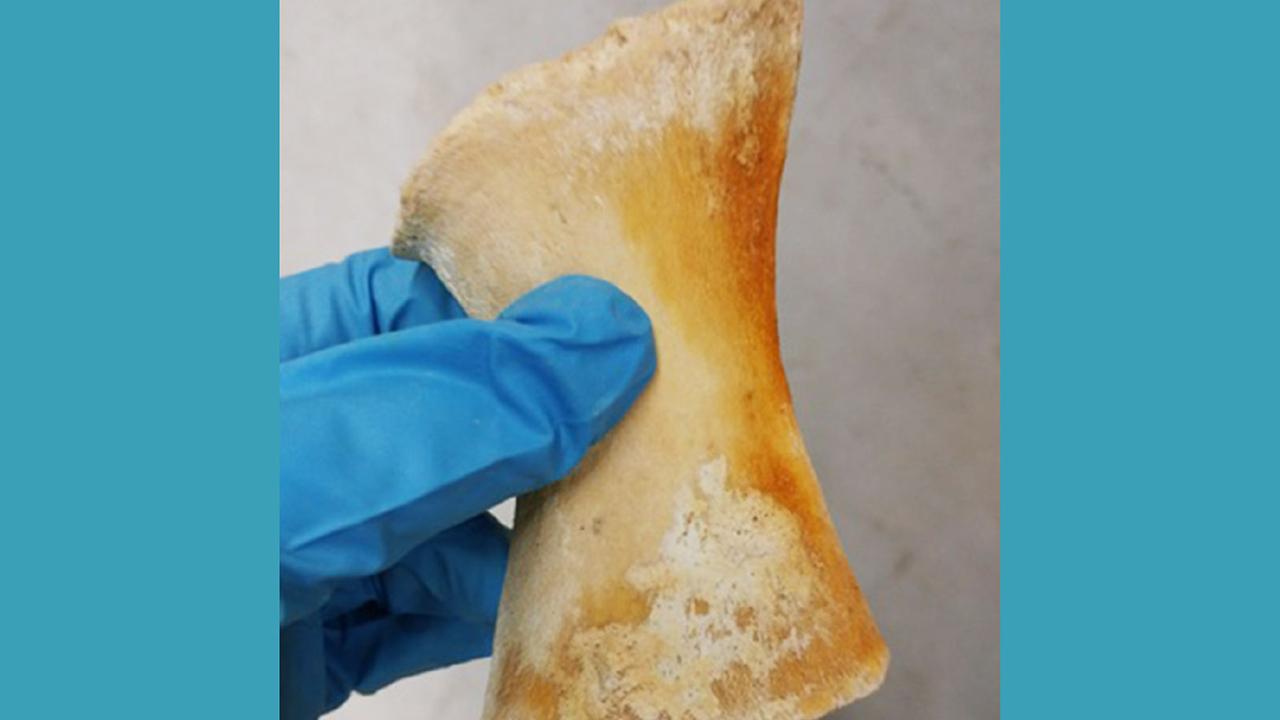
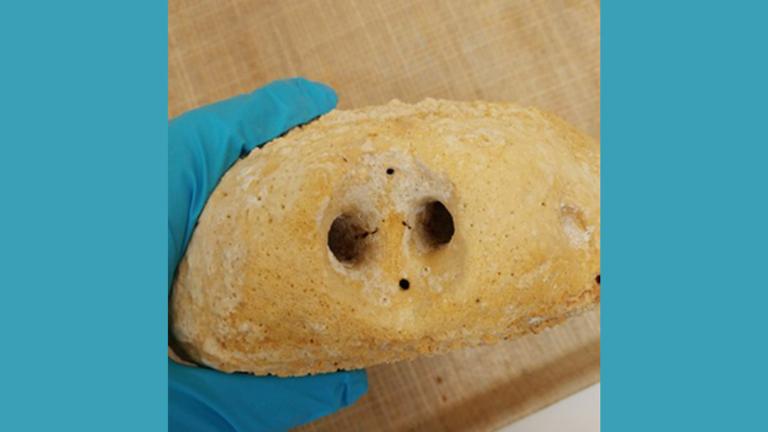
A 1911 murder in Scotland was solved thanks to adipocere. Patrick Higgins, the widowed father of two small boys, told neighbors that he had sent his sons to live in Edinburgh, since he could not afford to care for them. Two years later two bodies were found floating in a quarry near his house, covered in adipocere. Identification of the bodies as the missing brothers was confirmed and their father was sentenced to death. The story doesn’t end there, though, as two Edinburgh University pathology professors assigned to the case stole some of the remains of the boy’s bodies and put them in the museum’s collections! It was not until 2009 that they were returned to the family and buried with the rest of the remains.
There are many more stories about adipocere and how it has been used in science. Some of them are quite gory, though, and what do you know, adipocere has indeed turned up in a few murder mysteries as well! Maybe there is time for a little light reading for after a day of cleaning whale bones.
By Becky Desjardins,
Taxidermist, Naturalis Biodiversity Center
Editors note: Naturalis didn't post any picture of adipocere in combination with forensic anthropology.
If curious, you are free to google these images yourself. (Don't do this while eating.)